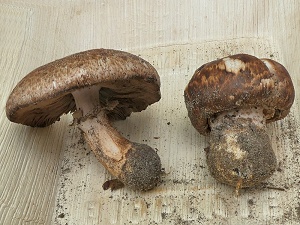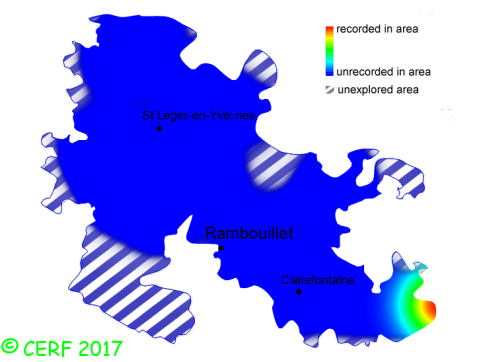| Agaricus lanipes (F.H. Møller & Jul. Schäff.) Konrad & Maubl. |
|
|
|
|
|
|
The cap is dark red-brown to chocolate brown (scales) on an ochre background. The cap surface is scaly, not viscid nor sticky. The stem is white above ring, brown below, with a simple ring, superior, white on the upper surface, brown below. The flesh is turning slowly red at stem top, yellow at stem base (especially old specimens) when exposed to air; the odour is mushroomy; its texture is fibrous. The gills are pink to black, free, crowded . The spore print is dark brown. This species is saprophytic. It grows on the ground, with beech, oak, pine. The fruiting period takes place from June to December.
Chemical tests : no reaction to Schaeffer's test. Distinctive features : cap covered with brown scales; flesh turning pink towards apex of stem, turning yellow towards base; white woolly stem above single ring, and covered with brown scales below ring; stem tapering towards base Agaricus lanipes is rare and confined in the forest of Rambouillet, and is infrequent, more generally speaking . | ||
|
page updated on 14/01/18

